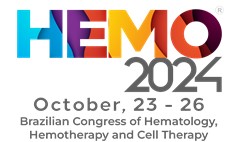
Beta thalassemia is an inherited blood disorder caused by defective synthesis of the beta chains of hemoglobin. This results in the production of ineffective red blood cells, leading to anemia and a severe reduction in the ability to transport oxygen to organs and tissues. In some cases, patients with beta thalassemia, due to prolonged treatment processes and other factors, may develop malignant hematologic disorders. This case presentation describes a patient diagnosed with beta thalassemia major who developed Acute Lymphoblastic Leukemia (ALL) four years after undergoing Hematopoietic Stem Cell Transplantation (HSCT).
Materials and methodsA patient diagnosed with beta thalassemia major, registered at the Thalassemia Center (TC), underwent allogeneic HSCT in 2020 and was later diagnosed with T-cell Acute Lymphocytic Leukemia (T-ALL) four years post-transplant.
ResultsA 19-year-old male patient was diagnosed with beta thalassemia major at the age of one year. He has been under regular follow-up at the Thalassemia Center since the age of six. At seven years old, he was officially diagnosed with “Beta Thalassemia Major” (HbA2 ‒ 3.9%; HbF ‒ 57.1%) and has since been on a transfusion regimen with chelation therapy. On February 23, 2020, he underwent an allogeneic bone marrow transplantation from his HLA 10/10 matched sibling using the BU/Flu/CY/ATG/TT myeloablative conditioning regimen. Post-transplant chimerism analysis showed 93% donor cells. The patient was regularly monitored at the TC-HSCT outpatient clinic.
Medical historyThe patient was born from his mother’s third pregnancy and third delivery.
• Two siblings from previous pregnancies did not survive.
• He was born at term with a birth weight of 3500g.
• He had incomplete routine vaccinations.
• He had a history of measles and chickenpox infections.
• The family denies a history of tuberculosis or venereal skin diseases.
• One healthy sibling lives at home.
• Parents are not consanguineous.
• The father was diagnosed with Hodgkin lymphoma two months ago and started treatment.
On November 5, 2024, the patient presented with extensive bruising and petechiae over his entire body. His general condition was severe, and laboratory findings were:
• Leukocytes (L): 284.32 × 10³/µL
• Hemoglobin (Hb): 121 g/L
• Platelets (Tr): 30 × 10⁹/L
• Blast cells: 80%
The patient was hospitalized and diagnosed with T-ALL.
Flow Cytometry Findings:
• SSC/CD45 analysis revealed 90% blast cells in the CD45 low region.
• Blast cells expressed T-lymphoid markers (CD2+, CD3+, CD5+, CD7+, CD38+).
• Based on clinical and laboratory findings, the case was classified as T-ALL.
Genetic Testing (FISH Panel):
• No abnormalities detected in: cMYC, P16, E2A, TEL/AML1, MLL, BCR/ABL, IGH, P53, CRLF2, MYB, TLX3, TCRB, TLX1, TCRAD analyses.
Between November 7, 2024, and December 13, 2024, the patient underwent two cycles of Hyper-CVAD chemotherapy. By December 10, 2024, the patient achieved clinical and hematological remission with only 4% blast cells remaining in the bone marrow. A multidisciplinary consultation was held, and the treatment protocol was modified. The patient will continue therapy under the ALL IC BFM 2024 protocol with Minimal Residual Disease (MRD) monitoring. Before HSCT, the patient had mild hepatosplenomegaly (liver: 1.5–2.5 cm, spleen: 2–2.5 cm enlargement). After transplantation, these organs gradually normalized. However, with the transformation to ALL, both organs enlarged again (up to 3.5 cm).
ConclusionGenetic mutations likely play a significant role in this patient's family:
• The father has Hodgkin lymphoma.
• Two brothers died due to beta thalassemia.
• The patient carries a homozygous beta thalassemia mutation.
• The T-ALL developed four years post-HSCT from a seemingly healthy sibling donor, indicating potential familial genetic mutations.
The possibility of the donor sibling developing a lymphoproliferative disorder in the future should be considered as a potential scenario.






